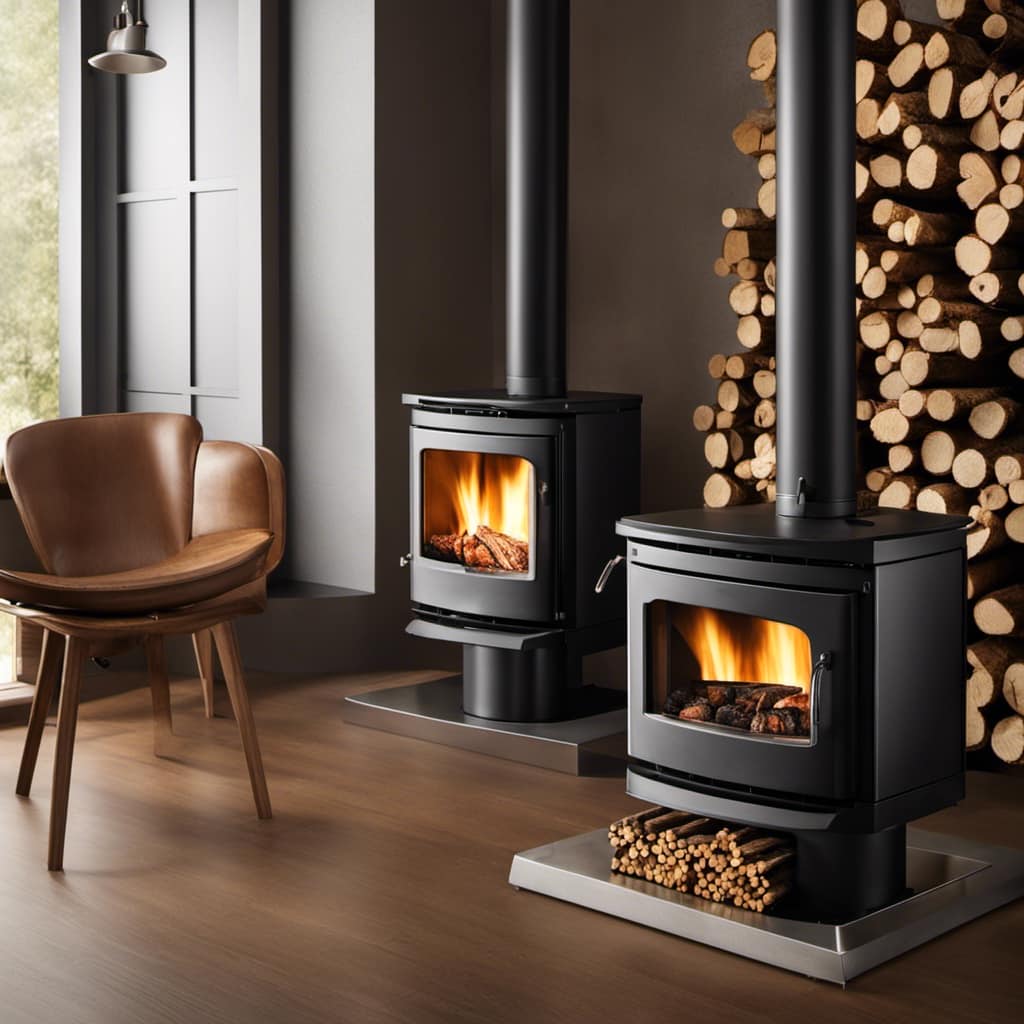Carbon monoxide (CO) quietly resides in our homes, much like a stealthy assassin, ready to attack when the moment arises.
In this article, I will delve into the intricacies of how one can fall victim to CO poisoning from a wood stove. Through a technical and evidence-based exploration, we will uncover the dangers of incomplete combustion, the role of poor ventilation, and the impact of a damaged or malfunctioning stove.
Prepare to be enlightened and empowered to protect yourself and your loved ones.
Key Takeaways
- Incomplete combustion during the burning process of a wood stove can lead to the production of carbon monoxide (CO), which can bind to hemoglobin in the blood and result in health risks such as headaches, dizziness, confusion, loss of consciousness, and even death.
- Proper ventilation and the installation of carbon monoxide detectors are crucial to prevent the accumulation of carbon monoxide and the associated health risks. Insufficient exchange of air and trapping of harmful gases and pollutants can occur without proper ventilation.
- Backdrafting and flue blockages can occur when there is an insufficient air supply for combustion, causing combustion byproducts to be drawn back into the living space. This poses a risk of carbon monoxide poisoning, making it important to prioritize proper ventilation and regular maintenance, including inspection and cleaning of the flue, chimney, and stovepipe.
- A damaged or malfunctioning wood stove increases the risk of carbon monoxide poisoning. Warning signs such as yellow or flickering flames, soot or black marks, and excessive condensation should be addressed promptly. Regular maintenance and inspection are essential to ensure the safety of the household and prevent the release of carbon monoxide.
The Dangers of Incomplete Combustion
I learned about the dangers of incomplete combustion and the potential risks it poses to my health. Incomplete combustion occurs when there’s insufficient oxygen during the burning process, leading to the production of harmful byproducts.

One of the main concerns is the release of carbon monoxide (CO), a colorless and odorless gas. CO is extremely dangerous as it binds to hemoglobin in our blood, preventing oxygen from being transported efficiently throughout our bodies. This can result in a variety of health risks, ranging from mild symptoms like headaches and dizziness to more severe effects such as confusion, loss of consciousness, and even death.
Poor air quality is a significant consequence of incomplete combustion, as it releases other pollutants like nitrogen oxides and particulate matter, which can exacerbate respiratory conditions and lead to long-term health issues.
It’s crucial to ensure proper ventilation and regular maintenance of combustion devices to prevent incomplete combustion and protect our health.
The Role of Poor Ventilation
One major factor contributing to the dangers of incomplete combustion is the presence of insufficient ventilation, which can lead to the accumulation of harmful gases and pollutants in indoor spaces. Inadequate ventilation prevents the proper exchange of air, trapping these harmful substances and increasing the health risks associated with prolonged exposure.
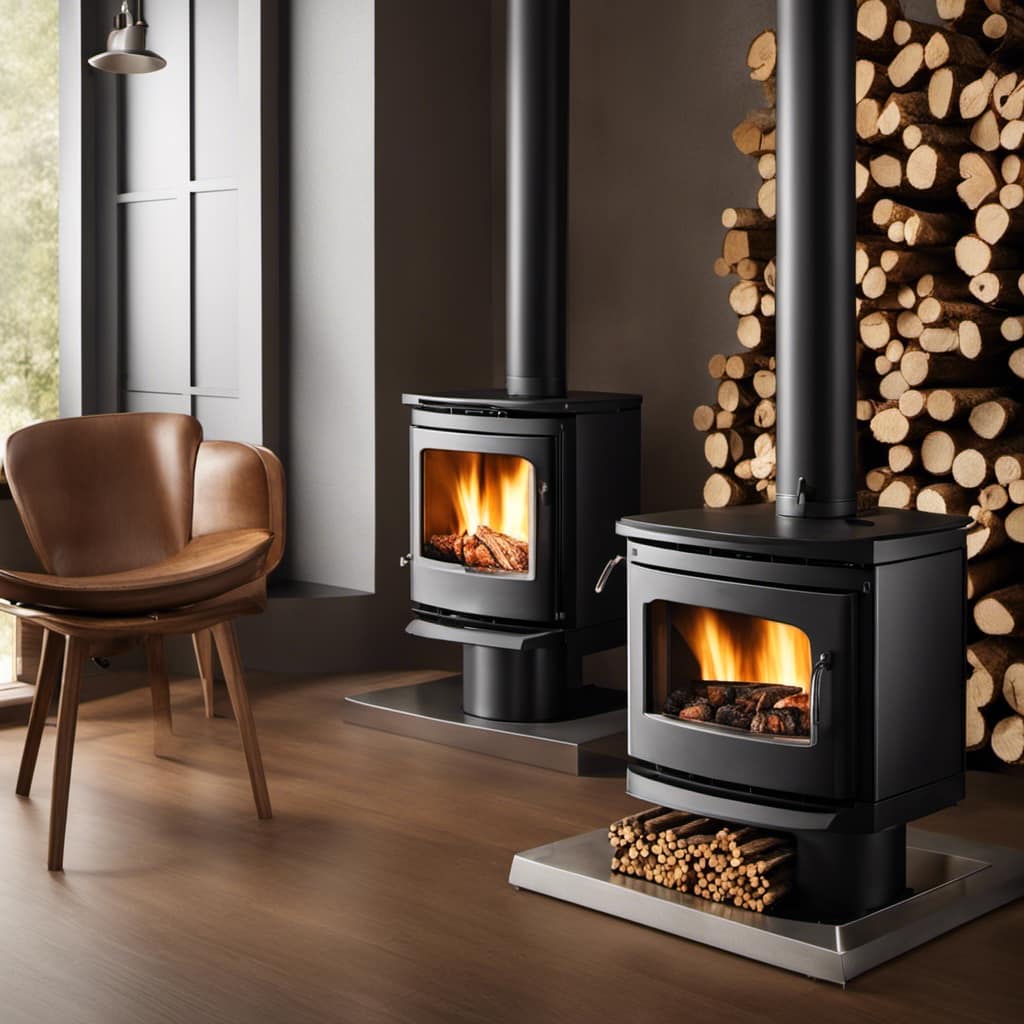
Carbon monoxide (CO) is one of the most concerning pollutants that can accumulate in poorly ventilated spaces. CO is a colorless and odorless gas that’s produced during the incomplete combustion of fuels like wood, gas, or oil. Prolonged exposure to high levels of CO can lead to carbon monoxide poisoning, which can cause symptoms such as headaches, dizziness, nausea, confusion, and even death.
It is crucial to ensure proper ventilation in indoor spaces to minimize the risks of incomplete combustion and the accumulation of harmful gases, particularly carbon monoxide. Regular maintenance and installation of carbon monoxide detectors can help protect against the dangers of poor ventilation.
Understanding Backdrafting and Flue Blockages
My wood stove’s flue blockage caused backdrafting, which led to a dangerous buildup of carbon monoxide in my home.
Carbon monoxide (CO) is a colorless, odorless gas that’s produced when fuels such as wood, coal, or gas are burned.
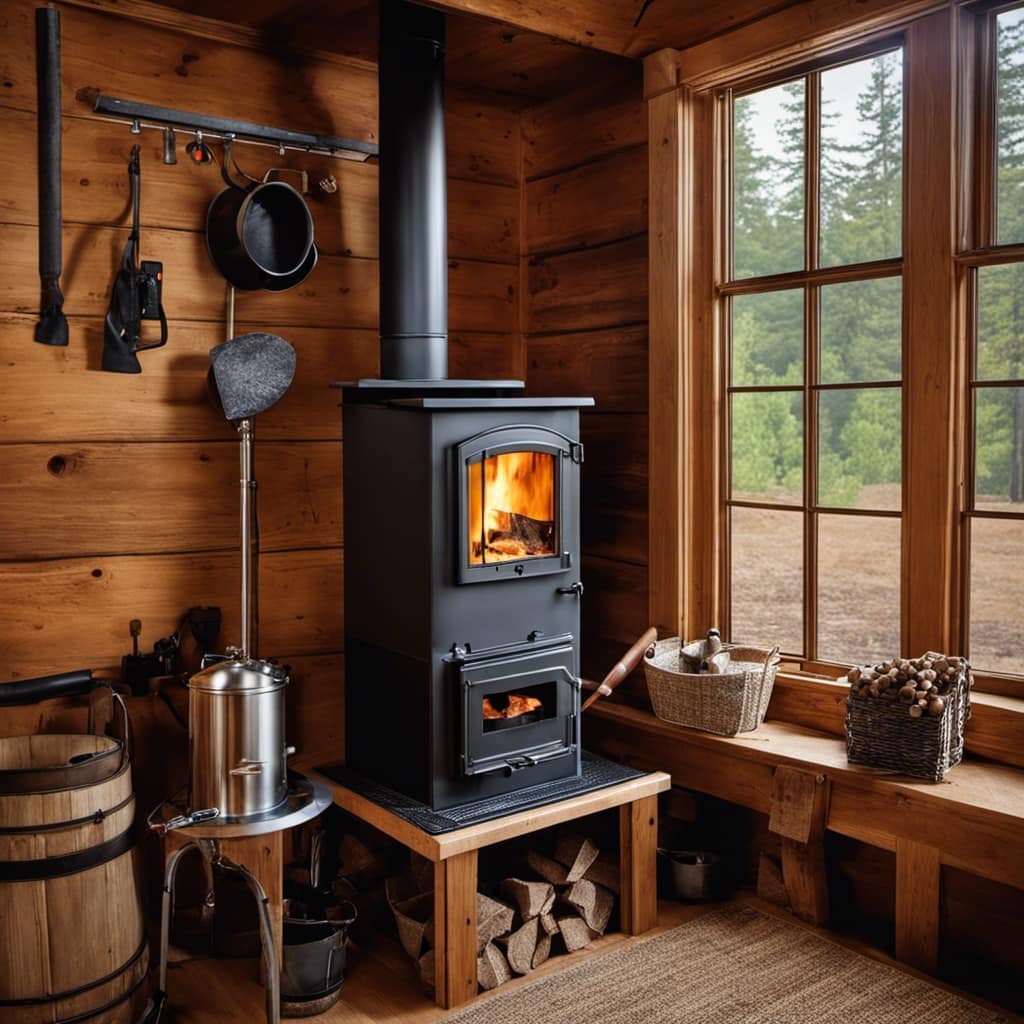
Backdrafting occurs when there’s insufficient air supply for combustion, causing the combustion byproducts, including CO, to be drawn back into the living space instead of being expelled safely through the flue.
This can result in serious health risks, including CO poisoning, which can be fatal.
To prevent backdrafts and the associated CO risks, it’s essential to ensure proper ventilation and regular maintenance of the wood stove.
Regularly inspecting and cleaning the flue, chimney, and stovepipe, as well as installing carbon monoxide detectors in the home, can help detect and prevent backdrafting incidents, ensuring the safety of your household.
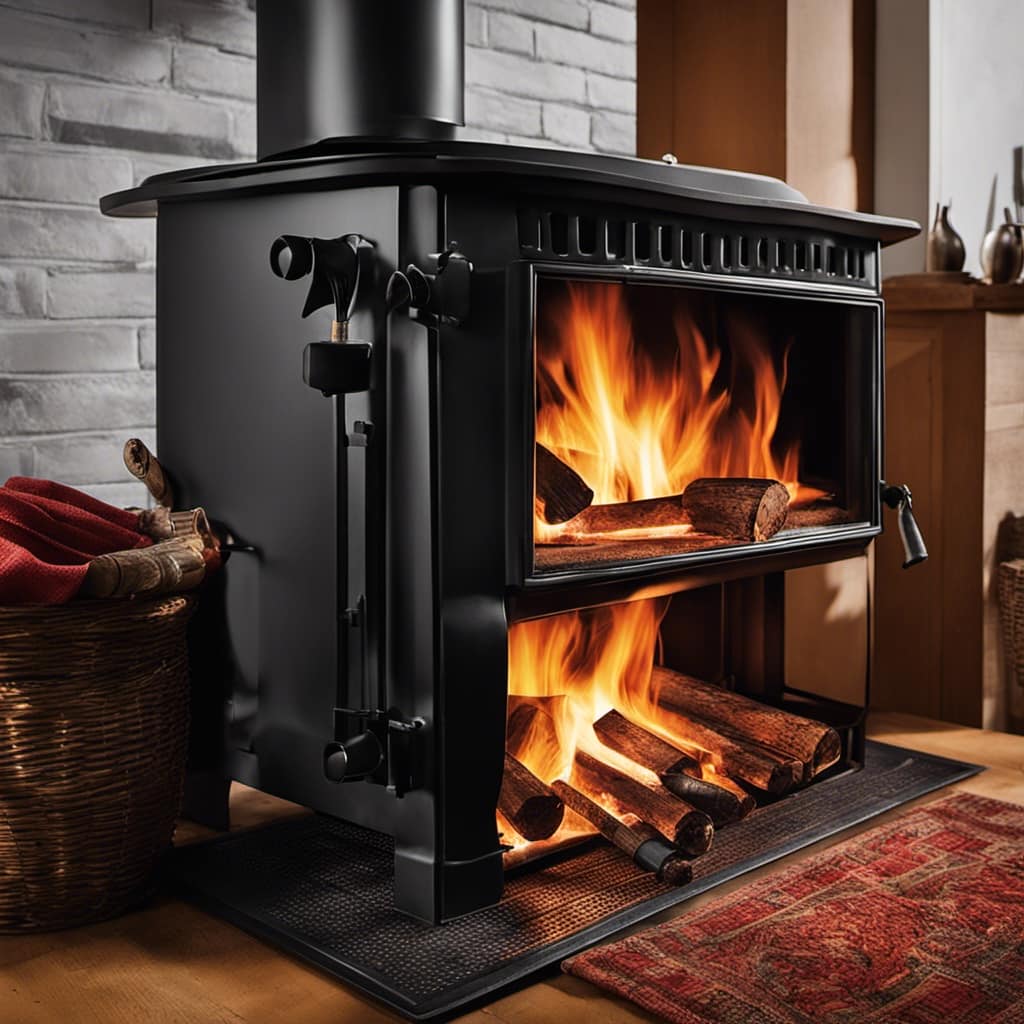
The Impact of a Damaged or Malfunctioning Stove
Having a damaged or malfunctioning stove can be extremely dangerous, as it increases the risk of carbon monoxide poisoning in your home. Carbon monoxide (CO) is an odorless and colorless gas that’s produced when fuels like wood, gas, or oil are burned. When a stove isn’t functioning properly, it can lead to incomplete combustion, resulting in the release of CO into the air.
Ignoring warning signs of a damaged stove can have severe consequences. Here are the potential risks associated with carbon monoxide leaks:
- Headaches, dizziness, and nausea
- Fatigue and confusion
- Chest pain and shortness of breath
It is crucial to pay attention to warning signs such as yellow or flickering flames, soot or black marks around the stove, or an excessive amount of condensation on windows.
Regular maintenance and inspection of your stove can help prevent these dangers and ensure the safety of your household.
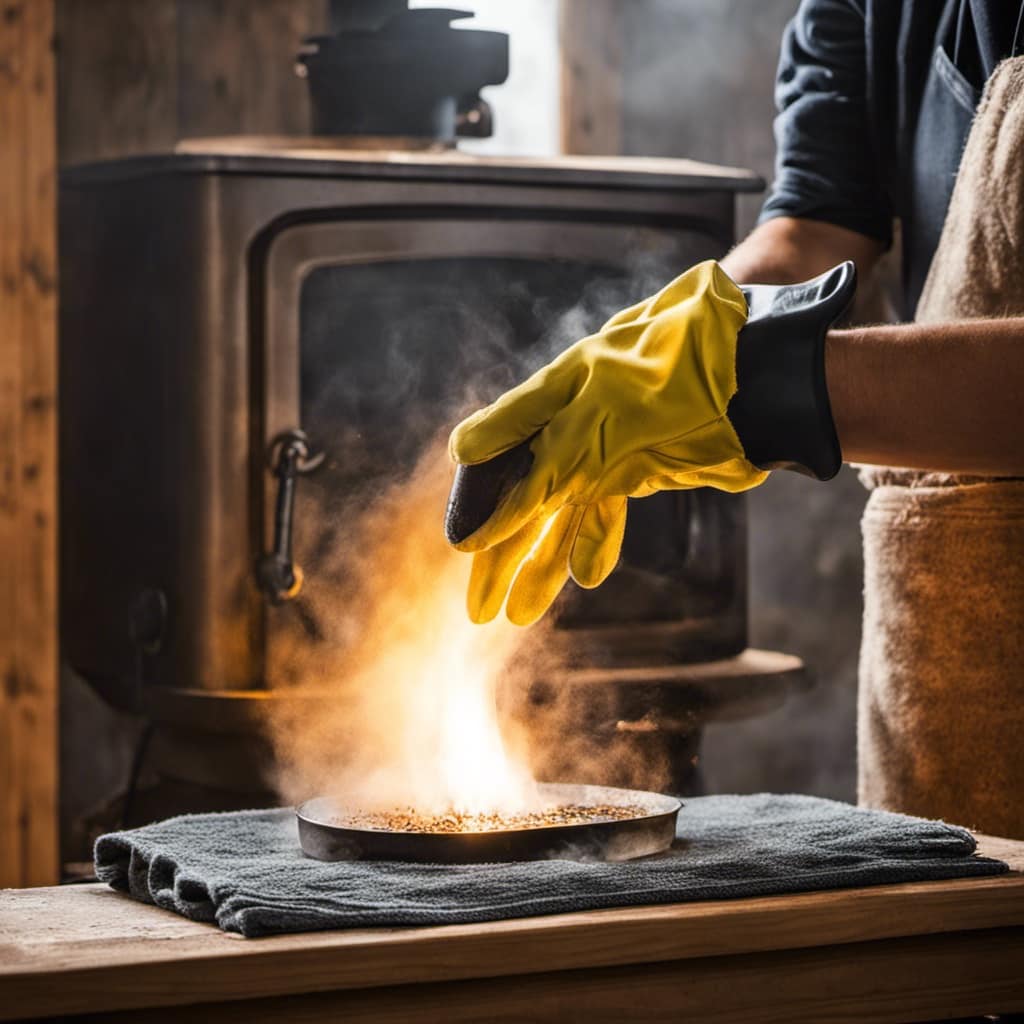
The Importance of Regular Maintenance and Inspections
As I understand the current discussion topic, it’s crucial to prioritize regular maintenance and inspections to ensure the safety of your household. Recognizing early symptoms and preventing carbon monoxide leaks are key components of this discussion.
Carbon monoxide (CO) is a colorless, odorless gas that can be produced by wood stoves and other fuel-burning appliances. Without proper maintenance, these appliances can develop cracks or blockages, leading to the release of CO into the home.
Early symptoms of CO poisoning include headache, nausea, dizziness, and confusion. To prevent carbon monoxide leaks, it’s important to have your wood stove professionally inspected and cleaned on a regular basis. This includes checking for any cracks in the stove or chimney, ensuring proper ventilation, and installing a CO detector in your home.
Frequently Asked Questions
Can CO Poisoning Occur Even if My Wood Stove Is Functioning Properly?
Yes, CO poisoning can occur even if a wood stove is functioning properly. Lack of wood stove maintenance and common causes of carbon monoxide leaks, such as blocked flues or inadequate ventilation, can lead to CO poisoning.
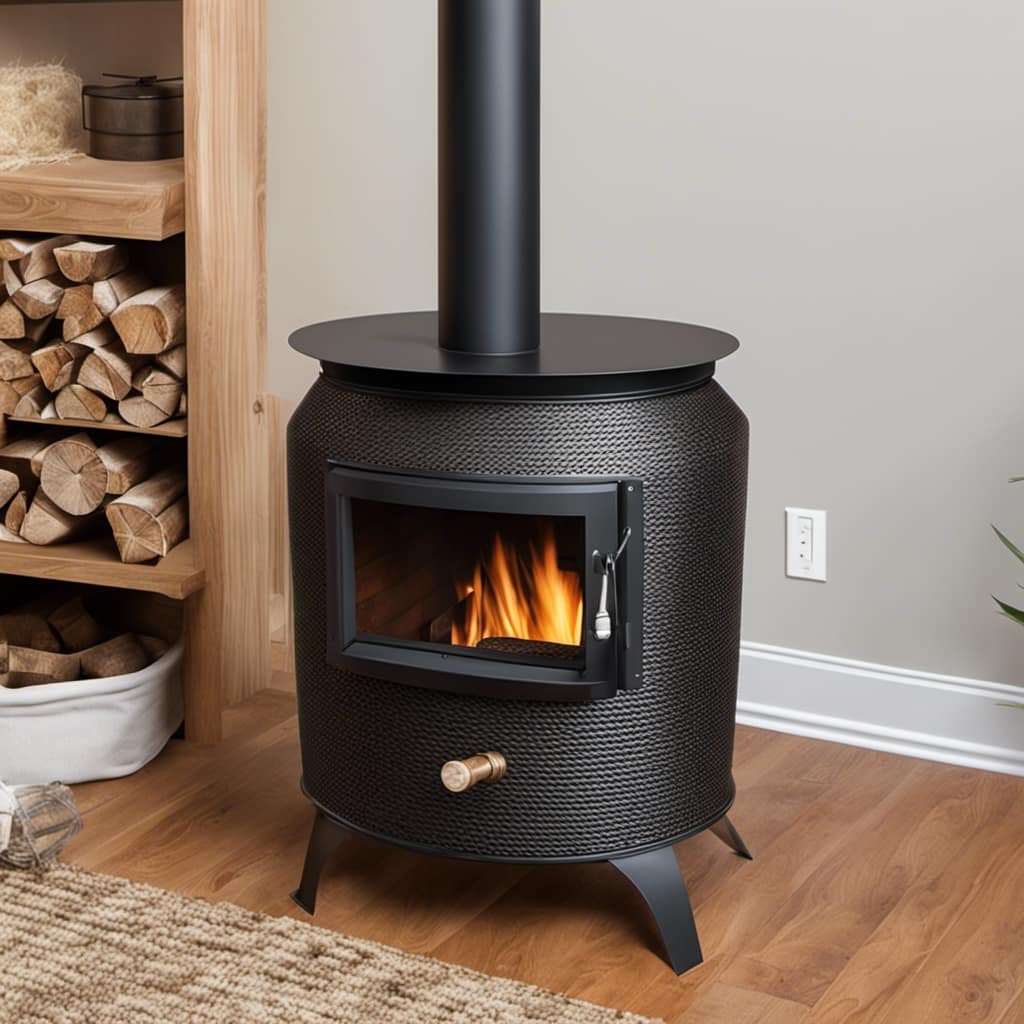
How Long Does It Typically Take for Symptoms of CO Poisoning to Appear?
Typically, symptoms of CO poisoning appear within a few hours, but can be delayed up to several days. Children may experience symptoms sooner due to their smaller size and higher metabolic rate.
Can CO Poisoning From a Wood Stove Be Fatal?
Co poisoning from a wood stove can be fatal. The symptoms of co poisoning include headache, dizziness, nausea, and confusion. It is important to be aware of the dangers of co poisoning and take necessary precautions to prevent it.
Are Children More Susceptible to CO Poisoning From Wood Stoves?
Children’s health is a significant concern when it comes to CO poisoning from wood stoves. Long-term exposure to this toxic gas can have detrimental effects on their developing bodies.
Is It Possible to Prevent CO Poisoning by Using a Carbon Monoxide Detector?
Yes, carbon monoxide detectors are effective in preventing CO poisoning from wood stoves. They detect dangerous levels of CO and provide early warnings. However, proper ventilation and maintenance are also crucial in preventing CO poisoning.
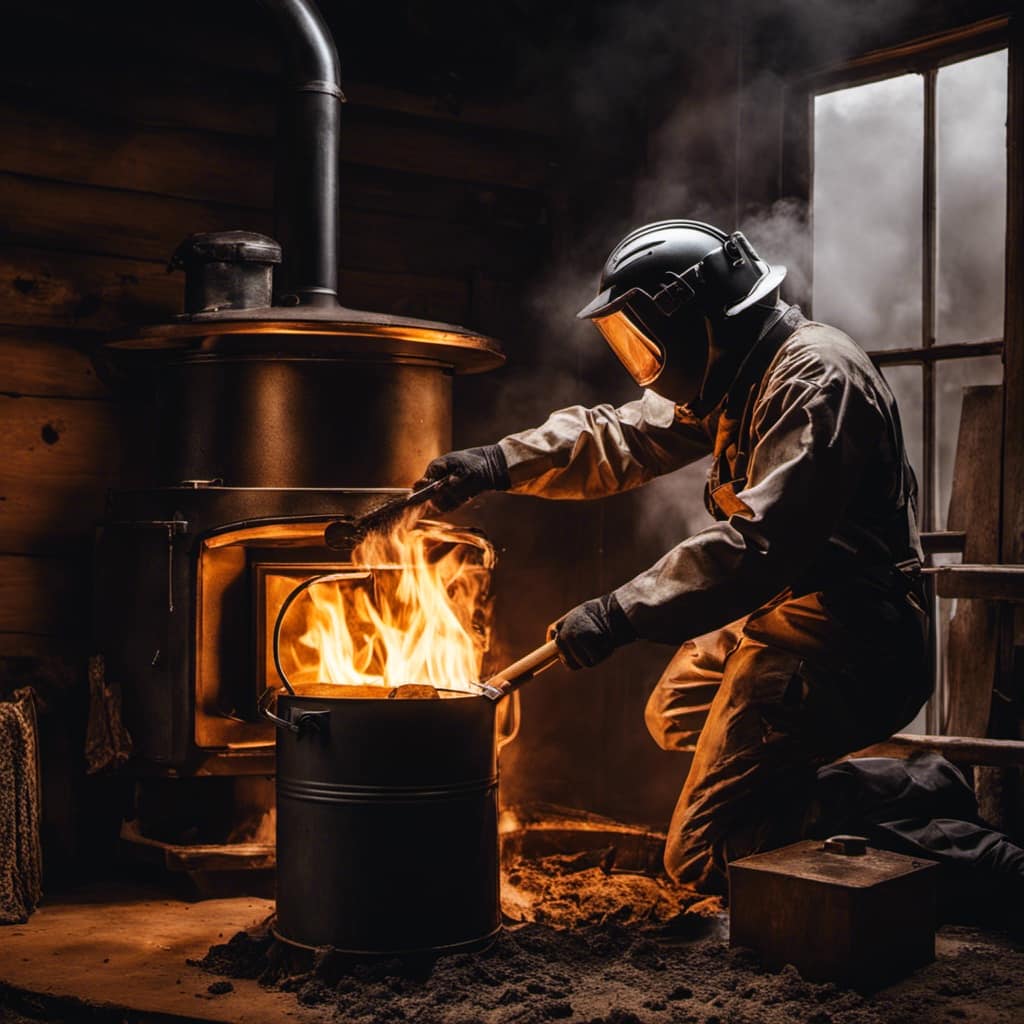
Can a Leaking Wood Stove Cause Carbon Monoxide Poisoning?
Yes, wood stove leakage signs can indeed indicate a potential risk of carbon monoxide poisoning. Any indication of smoke or soot around the stove, or a persistent odor of smoke in the room, should not be ignored. These signs may signal that carbon monoxide is leaking into the home.
Conclusion
In conclusion, the dangers of carbon monoxide poisoning from a wood stove are very real and shouldn’t be taken lightly. Poor ventilation, backdrafting, flue blockages, and a damaged or malfunctioning stove can all contribute to the release of this deadly gas.
Regular maintenance and inspections are crucial to ensure the safe operation of a wood stove. As the saying goes, ‘An ounce of prevention is worth a pound of cure,’ so take the necessary precautions to protect yourself and your loved ones from the dangers of CO poisoning.
Growing up surrounded by the vast beauty of nature, Sierra was always drawn to the call of the wild. While others sought the comfort of the familiar, she ventured out, embracing the unpredictable and finding stories in the heartbeat of nature.
At the epicenter of every remarkable venture lies a dynamic team—a fusion of diverse talents, visions, and passions. The essence of Best Small Wood Stoves is crafted and refined by such a trio: Sierra, Logan, and Terra. Their collective expertise has transformed the platform into a leading authority on small wood stoves, radiating warmth and knowledge in equal measure.






